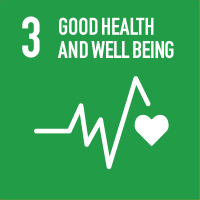Studying at the University of Verona
Here you can find information on the organisational aspects of the Programme, lecture timetables, learning activities and useful contact details for your time at the University, from enrolment to graduation.
Study Plan
This information is intended exclusively for students already enrolled in this course.If you are a new student interested in enrolling, you can find information about the course of study on the course page:
Laurea magistrale in Molecular and Medical Biotechnology - Enrollment from 2025/2026The Study Plan includes all modules, teaching and learning activities that each student will need to undertake during their time at the University.
Please select your Study Plan based on your enrollment year.
1° Year
| Modules | Credits | TAF | SSD |
|---|
1 course among the following1 course among the following2 courses among the following3 courses among the following2° Year activated in the A.Y. 2024/2025
| Modules | Credits | TAF | SSD |
|---|
| Modules | Credits | TAF | SSD |
|---|
1 course among the following1 course among the following2 courses among the following3 courses among the following| Modules | Credits | TAF | SSD |
|---|
| Modules | Credits | TAF | SSD |
|---|
2 courses among the following ("CLINICAL PROTEOMICS" 1ST and2ND YEAR; the other courses 2nd year only)Legend | Type of training activity (TTA)
TAF (Type of Educational Activity) All courses and activities are classified into different types of educational activities, indicated by a letter.
Supramolecular chemistry of biological systems (2023/2024)
Teaching code
4S003661
Academic staff
Coordinator
Credits
6
Language
English
Scientific Disciplinary Sector (SSD)
CHIM/06 - ORGANIC CHEMISTRY
Period
Semester 1 dal Oct 2, 2023 al Jan 26, 2024.
Courses Single
Authorized
Learning objectives
This course examines the fundamentals of supramolecular chemistry, the domain of chemistry beyond that of molecules, in biological contexts. The discipline focuses on the chemical systems made up of a discrete number of assembled molecular subunits or components. Important concepts that have been demonstrated by supramolecular chemistry include molecular self-assembly, biomolecular folding, molecular recognition, host-guest chemistry, and molecular architectures. Students develop an understanding of the driving forces of supramolecular associations and how to exploit them for applications in biotechnology and biomedicine.
Prerequisites and basic notions
There are no specific prerequisites other than those required for access to the degree course.
Program
FUNDAMENTAL SUPRAMOLECULAR INTERACTIONS. Bond strengths. Ion-pairing. Ion-dipole. Dipole-dipole. Van der Waals. Polarization and London forces. Hydrogen bonding. Pi-interactions. Hydrophobic effect. Halogen bond. Coordination bond. Reversible covalent bond.
HOST-GUEST CHEMISTRY PRINCIPLES. From binding to recognition. Preorganization. Entropy-enthalpy compensation. Complementarity. Lock and key. Induced fit. Conformational selection. Allostery. Chelate effect. Macrocyclic effect. Shape selectivity. Criptate effect.
CATION BINDING. Cations in biology. Open chain ligands. Crown ethers. Podands. Criptands. Spherands. Corands. Calixarenes. Siderophores.
ANION BINDING. Anionic guest features. Binding forces. Biological receptors. Arginine fork. Protein nests. CH-halide bond. Shape selectivity. Guanidinium-, amide-based receptors. Neutral hosts. Lewis acid hosts. Halogen bonding.
MOLECULAR GUESTS IN SOLUTION. Cavitands. Calixarenes. Carcerands. Cucurbiturils. Cyclodextrins.
SELF-ASSEMBLY. Concepts. Classification. Single molecule s.a.: protein folding and foldamers. Biochemical self-assembly: helical viruses, DNA. Synthetic self-assembly: metal templating; h-bonded structures; G-quartets; molecular containers; dynamic covalent systems.
PROTEIN-LIGAND SUPERSTRUCTURES. Energetics of binding. Carbohydrate binding. Lipid binding proteins. Cooperativity and preorganization.
PROTEIN-PROTEIN/DNA SUPERSTRUCTURES. Quaternary structures. Non-obligate complexes. Size, topology, composition of interfaces. The core-rim model. Homodimers. Symmetry. Crystal packing interfaces. Dynamics. Hot spots. Protein-nucleic acid recognition.
SUPRAMOLECULAR CHEMICAL BIOLOGY. Biomolecular recognition by synthetic receptors. Modulators of protein-protein interactions. Conformationally constrained peptides. Stabilization of protein-protein interactions.
SUPRAMOLECULAR THERAPEUTICS. Rational drug design of enzyme inhibitors. Inhibitors of protein-protein interactions. Supramolecular antibiotics. Supramolecular disease pathways: inhibitors of fibril formation. Nanoscale medicinal materials.
ANALYTICAL METHODS - FLUORIMETRY. Physical basis of fluorescence. Lifetime and quantum yield. Intrinsic and extrinsic fluorophores. Environmental effects. Fluorescence anisotropy. FRET. Application to supramolecular systems.
ANALYTICAL METHODS - CALORIMETRY. Heat and energy. Isothermal titration calorimetry. Biomolecular complex formation, protein-membrane interactions, vesicle formation, fibrils formation. Differential scanning calorimetry. Macromolecule stability and denaturation. Lipid phase transitions.
NMR SPECTROSCOPY. Physical basis. NMR observables. The 1D NMR experiment. 2D experiments. HSQC and interactions. Chemical shift mapping.
LIPID ASSEMBLIES. Phospholipid features. Biomembranes. Lipid vesicles: preparation methods, controlled chemical composition, physicochemical properties. Fatty acid vesicles and protocells. Compartmentalization.
PROTEIN-NANOPARTICLE INTERACTIONS. Molecular recognition with nanostructured materials. Protein corona.
SUPRAMOLECULAR NANOPARTICLES. Host-guest based supramolecular nanoparticles: nanocarriers drug/gene delivery, micelles, vesicles. Nanoparticle-stabilized capsules. Liposomes.
Bibliography
Didactic methods
The teachers will use frontal lessons.
In special cases, provided for by the University guidelines, and at the request of individual students, recorded lessons may be made available.
Learning assessment procedures
The examiner will verify through written examination that the student has learned the chemical bases of supramolecular interactions, namely the principles that guide the molecular recognition mechanisms. The student must also be able to thoroughly discuss the main biological supramolecular systems, including in particular the biomolecular complexes, the superstructures, aggregates, and vesicular systems. Students are expected to know of examples of supramolecular chemistry in biomedical applications.
The examination method is not differentiated between attending and non-attending students and / or for Erasmus students and the course does not include intermediate tests.
Evaluation criteria
Ability to organize knowledge
Critical reasoning skills on the proposed topics
Exposure quality
Criteria for the composition of the final grade
The evaluation of the exam corresponds to the final grade.
Exam language
English

